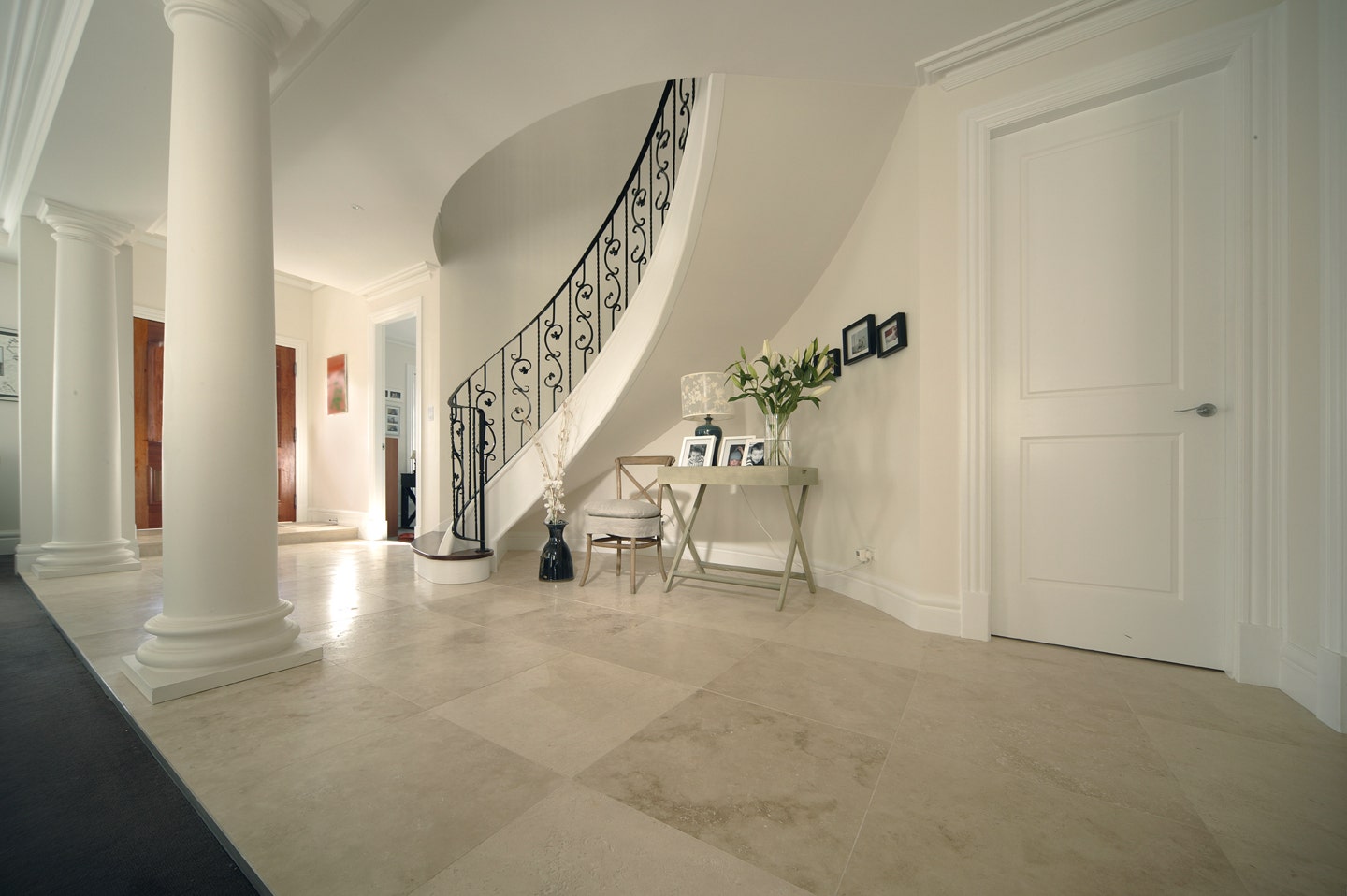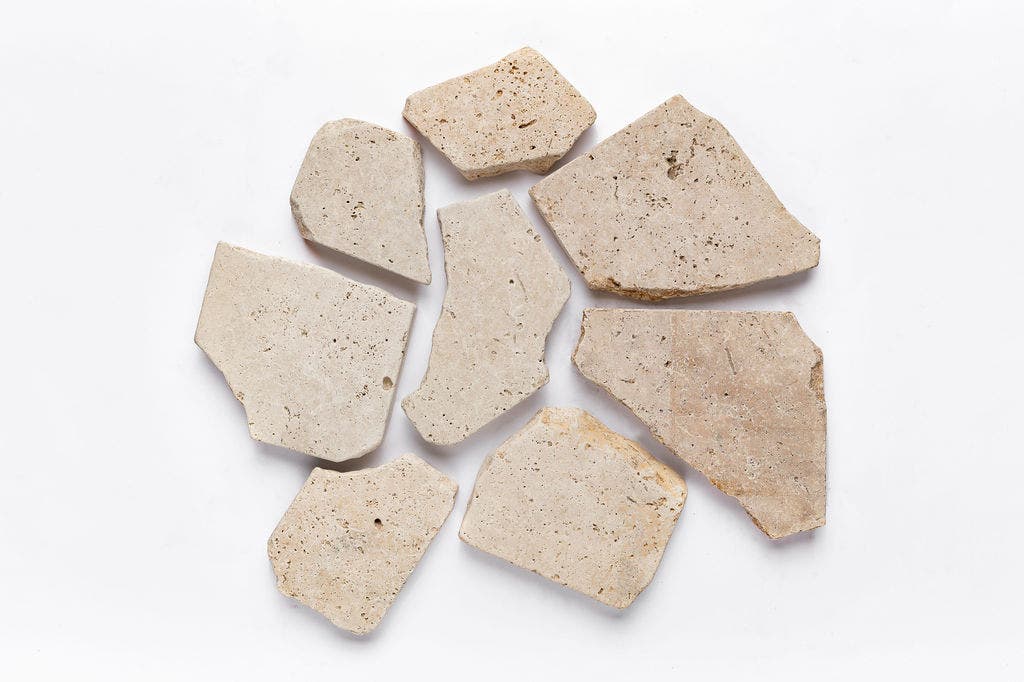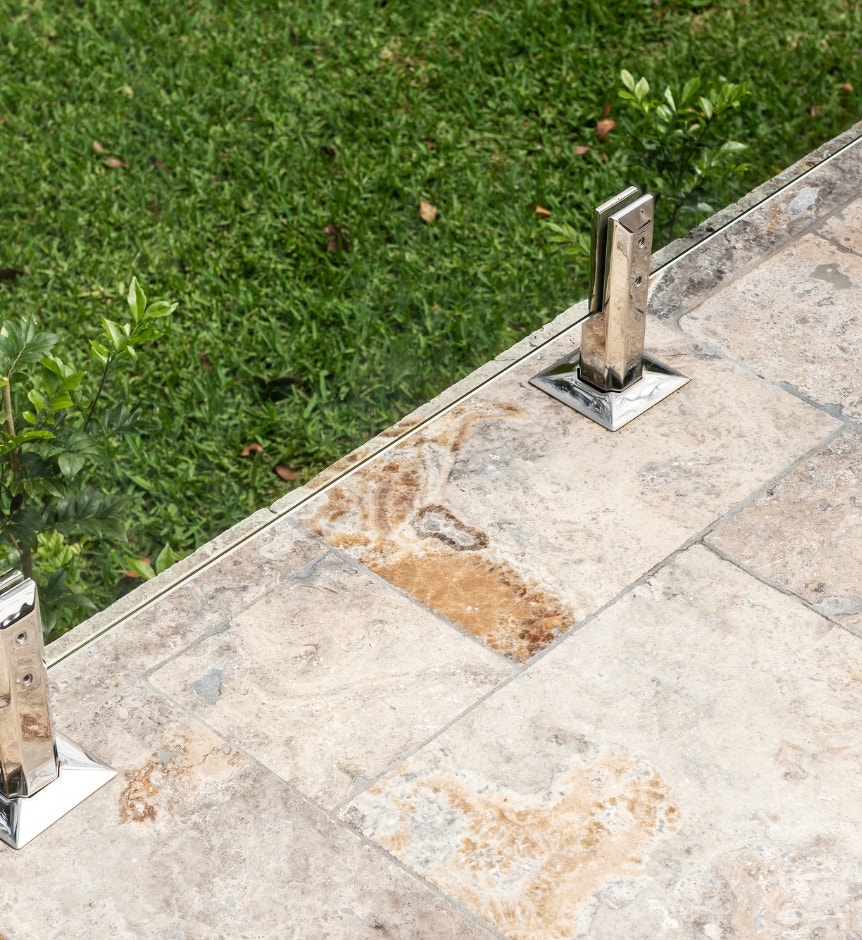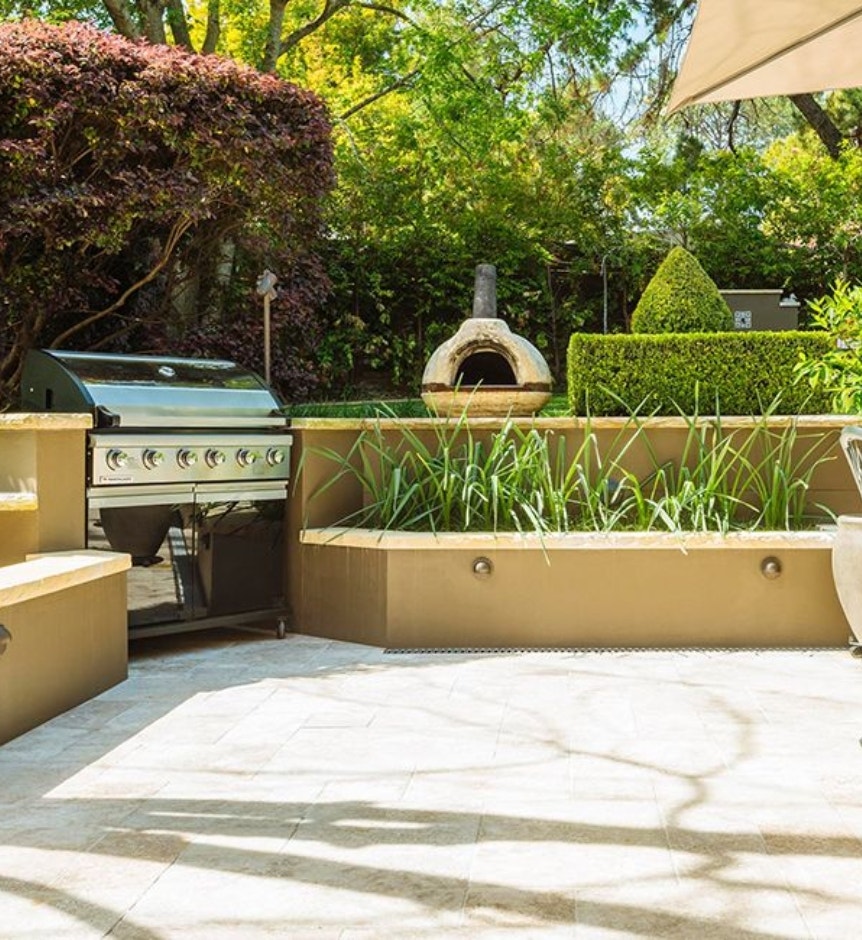Articles
How is Travertine formed?
09.03.23

Travertine is a type of limestone formed by the evaporation of mineral-rich river, lake and spring water when it changes temperature or acidity. It is often deposited by acidic hot springs or in cooler waters of limestone caves, but can also be formed from highly alkaline groundwater.
Travertine is a sedimentary rock that consists principally of calcite, the hexagonal form of calcium carbonate (CaCO3). It is formed by calcium carbonate separating from shallow or surface waters by a process of rapid precipitation. The trigger for the precipitation is usually a gain or loss of carbon dioxide (CO2). This causes a pH change and changes the chemical makeup of the water so that CaCO3 precipitates out of the water as calcite, forming travertine and other limestones.
Travertine is often formed as a white rock that darkens as it ages. But when microorganisms and living bacteria such as cyanobacteria (blue-green algae) occur in the water, different shades of yellow, pink, orange, green and brown can be created. Some of these colours are represented in the tiles and pavers made from travertine stone [link to What Color Is Travertine? (Colors, Finishes, Styles)].
Travertine stone mined from quarries around the world can vary based not only on colour but also on other factors such as quality and depth of vein in the stone.
WHERE ARE TRAVERTINE QUARRIES?
Travertine stone is found in hundreds of locations around the world but isn’t mined in all areas. Tivoli, in Italy, has the first record of travertine being mined. In fact, the word ‘travertine’ is a derivation of the Latin tiburtinus meaning ‘of Tibur’ which is the original name of Tivoli. The ancient Romans called travertine Lapis Tiburtinus, or ‘the stone from Tivoli’.
The Romans were the first to recognise the durability of the stone and began mining it as far back as 75 BC, during Julius Caesar’s reign. Travertine became a prime building material for important Roman monuments such as the Colosseum, the Trevi Fountain and St. Peter’s Basilica.
There are some very notable quarries of travertine in Tivoli, near Rome in Italy. At the hot mineral springs at Bagni di Tivoli, there are huge layers of travertine deposits that have built up over the last 200,000 years. The springs have been fuelled for millennia by the geothermal heat that also fuels Mt Vesuvius and the Roman baths, providing an ideal environment for the formation of travertine.
Situated close to Bagni di Tivoli, on the banks of the River Aniene, is probably the most famous and most important ancient quarry of Tivoli, the ‘Cava del Barco’ (Barco quarry). This was the largest quarry used by the Romans. The Colosseum was built using more than 1000 cubic meters of Roman travertine extracted from this quarry, and the great monument remains structurally intact today as a testament to the durability of Roman travertine.
In modern-day Italy, there are many commercial Roman travertine quarries that extract and process travertine, several of which are based in the same quarry basins used by the ancient Romans.
Italy had a near-monopoly on the production and global supply of travertine until the 1980s. Since then, travertine has been mined in various locations around the world. Turkey has now overtaken Italy as the largest producer and exporter of the stone. Turkey is known for its travertine terraces in Pamukkale, a UNESCO World Heritage Site within the Denzil Basin. The basin, which lies in southwest Turkey, is known for its geothermal qualities and seismic activity and is the site of around 60 travertine quarries.
Other countries where travertine is quarried include Egypt, Iran, Mexico, Peru, Spain and China. The rock mined from different quarries, and the resulting tiles made from it, will differ in appearance and texture depending on the region. It can also differ in price according to regional differences, quality and labour costs. Click through to see our range of travertine tiles.
HOW IS TRAVERTINE MINED AND MANUFACTURED?

Travertine is mined from a quarry which is selected based on factors such as quality and colour. There are several methods used to cut and extract the stone, including:
• Channelling machines – these are used to drill holes into the stone. Wedges (or freezing water in cold climates) are put into the holes to separate the stone from the quarry wall.
• Wire saws – these are used to cut the stone into blocks that are transported to factories for cutting and manufacturing. Diamond impregnated wires are pulled through previously drilled access holes in the stone and attached to the saw, which oscillates to cut the slab.
• Chain saws – these are larger but similar to tree cutting chain saws. They have diamond blades for cutting the stone.
• Water-jet cutting – these machines work to erode the stone in an orchestrated manner using high powered jets of water, sometimes with the addition of an abrasive agent.
In some cases, when a slab of travertine is cut, it can be drilled or blasted free of the quarry wall.
When the travertine has been broken down into manageable blocks, it is transported from the quarry to a factory or production facility to be cut into as many different sized slabs as needed. The highly specialised cutting equipment can cut the stone into tile sized pieces that are sanded to a uniform thickness.
Once the tile-sized pieces have been polished, they can be processed in different ways. The process the tile goes through at this stage largely depends on the finish of tile that’s required [link to spoke “What Color Is Travertine? (Colors, Finishes, Styles)”]. The tile can then be customised for specific installations, the edges cut and rounded, and a final polish applied.
Once processed, the travertine tiles will be packaged for shipping. The packaging differs depending on the final destination. If the tiles are being sent directly to a construction site, they will often be securely packed directly onto a pallet. If they are bound for a retail or wholesale outlet or some other distribution centre, they will usually be packed into a wooden crate or a cardboard box, shrink-wrapped or Styrofoam packed. They should always be packed in a way that protects them from damaging each other.

What about installation?
Part of the beauty of travertine stone tiles is their flexibility of use. They can be installed indoors or outdoors. Travertine texture is naturally non-slippery and the stone is very hardy, so they are perfect for steps and stairs, the bathroom, kitchen, patio or around the pool. When installed outdoors, travertine pavers have an average lifespan of more than 10 times that of concrete or precast pavers.
Travertine stone tiles can be professionally installed or you can do it yourself [link to spoke “How To Install Travertine Pavers in X Steps”]. The home handyman who embarks on a tile installation project will first have to ensure the substrate or surface to be tiled is properly prepared. It needs to be dry, clean, flat, free of cracks and weeds and reinforced if necessary.
One very important step to remember is to lay out the tiles before installing them. Travertine is a natural stone so there will be variations in colour, even within the same pallet or crate. Set the tiles out to get the look and design you want before adhering them to the substrate.
Two or three weeks after installing travertine, you can seal your tiles so they don’t absorb any liquids and to protect their natural beauty from stains. Anything harsh or oily spilt on the surface can penetrate the pores and become unreachable by domestic cleaning methods. This can mean that without being sealed your tiles will start to look dirty after use.

SUMMARY
Travertine is an ancient stone formed over millennia and mined around the world for its beauty, versatility and hardiness. First discovered to be a hard-wearing and long-lasting stone by the ancient Romans, its natural features still make it a desirable addition to modern properties. Whether they’re for internal or external use, travertine stone tiles and pavers are a stunning and hard-wearing choice for your property.
Book an appointment with an Amber specialists so we can help find the best solution for you at any stage of your tiling or paving journey.




